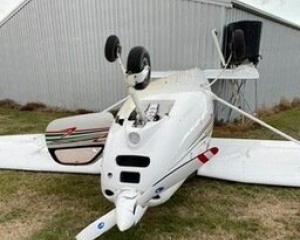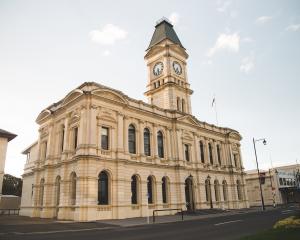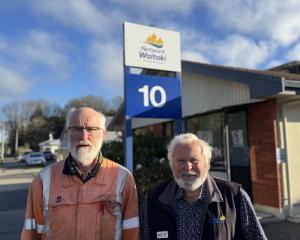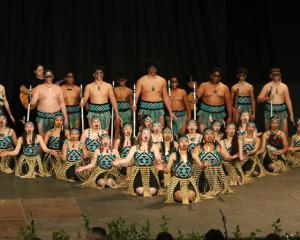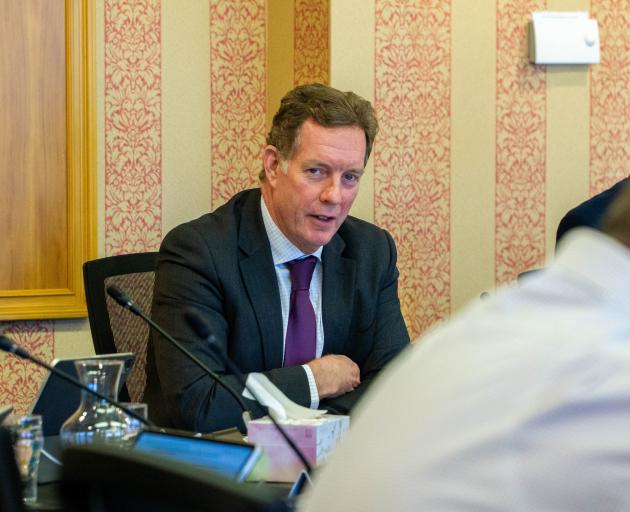
The promise has been a better, more efficient council.
Last week it announced an untraditional restructure at an all-staff meeting, which has been speculated to mean redundancies.
Reporter Wyatt Ryder sat down with chief executive Alex Parmley to get a clearer picture of what is going on beneath the clocktower.
JOB LOSSES
"I’ll be absolutely clear, and I have said this to the staff, over the next couple of years we will become a slimmer organisation."
Those are the words of Mr Parmley following the meeting with all 250 of the council’s full-time, part-time, casual and volunteer staff, who were given a consultation document and asked for feedback. They have until June 6 to respond.
The Oamaru Mail asked Mr Parmley if staff would be made redundant, how many fewer roles there would be and how much money the restructure would save, but he insisted he could not talk about it.
"As a good employer we need to go through a consultation process with our staff.
"Our staff will have a heck of a lot to say."
When asked if the council was willing to make redundancies, he said it was a last resort.
"I can’t make a commitment there won’t be any redundancies."
It was "not a traditional restructure" and the council had been preparing for it by leaving roles vacant and hiring short-term contractors, he said.
That would continue as it transitioned to the new model.
"We don’t want to make people redundant. We’ve tried to set up a process that gives everyone an opportunity within the new organisation."
Just as some roles would be removed, new ones would be created.
No specific departments would be targeted and every staff member would be affected by the proposal.
"This is something that affects the whole organisation."
When asked if the council had too many staff, Mr Parmley said it had the right number of staff to deliver its services under its current model.
"This is not about cutting staff or cutting services, this is about delivering services in a much more efficient way."
It was "inevitable" that when the council becomes more efficient, which was the aim of transformation, then it would need fewer staff.
The changes would take place over time, not all at once, he said.
WHAT IS TRANSFORMATION?
The actual purpose of the programme has been a point of confusion in the community since its inception, something Mr Parmley admitted to.
He said there was a lot of interest from the public, but "probably not a lot of understanding".
"It’s very deliberate that we haven’t given specifics at this time."
The council had been ensuring plans and timetables were clear internally before sharing details with the public.
"We’re looking at how can we modernise what we do to make it fit better with our customers’ needs."
That meant redesigning the organisation at a fundamental level to cut out layers of bureaucracy and achieve better outcomes.
"This council was set up in 1989 ... it hasn’t changed that much since then.
"The world we operate in has changed quite a bit."
Overall, the programme aimed to increase efficiency by about 10%, which was spread among all aspects of the organisation, including staff, property overheads, consultancy spending and more.
"Some of that is efficiency in that we will be delivering more with the same money, some of that is we’ve made an actual cash saving from that."
That would mean less burden on ratepayers and better results for customers.
At present, somebody who wanted to open a restaurant in a council building in the centre of Oamaru would probably need to engage with five different departments, he said.
Those departments did not work efficiently together and that person would be treated like five different customers.
The aim was to have them work together so that person would be treated as one customer and their restaurant could be set up more efficiently.
"It takes too long and its more difficult than it should be to do the things that we need to do, and want to do, for our customers."
Every aspect of the organisation would be more effective under the new programme, which would translate to better community results, he said.
"Whatever the council agrees to do, it’ll be easier to get those things done."
The council had a "one-size-fits-all" approach to operating in different areas and communities around the district, which would change with the new design.
Instead of looking at water, roading and infrastructure as separate departments, the council would instead look at how those things needed to be implemented in a specific area and have those involved work as one team.
It would also change how everyday customers interacted with the organisation.
The new design would have more self-service options for people who did not want to visit in person or make a phone call.
Getting people to use self-service options would free up more time for those who did want to contact the organisation in a more traditional way, leading to better service for both, he said.
It went beyond that, to the systems used between staff and how they acted.
The exact specifics of what the new design would be would not be shared until the staff consultation was over and then the council would begin a phased implementation of the changes.
Mr Parmley said the word transformation was chosen to signal a "bigger, more fundamental change".
When asked if the council could have done a better job of explaining transformation to the community, Mr Parmley said no.
"I’m very committed to that process working for the organisation by engaging the people of the organisation ... and that takes time."
The council had engaged with the community to understand the challenges it faced since the start of the project by holding public sessions, interviewing community stakeholders, speaking to councillors and more.
$4.5 MILLION
When asked to explain the price tag behind the project, Mr Parmley said it was "a big organisational change".
"That change takes a lot of thinking about and a lot of resource to get that right.
"We are asking everyone in our organisation under that proposal to work in a different way.
"We’ll be changing a lot of roles, we’ll be changing a lot of systems. We need people to help us manage that and to do it well."
There was a dedicated transformation team made up of seven full-time staff members, he said.
Other departments were working on the programme as well.
"We didn’t have people, before the transformation, that had spare capacity to think about the future and how we reshape ourselves.
"That’s an additional thing that we’re doing on top of our day-to-day service delivery."
IS HE HAPPY?
When asked if he was happy with the state of the council, Mr Parmley said "I think we can do things a lot better".
"Every person in this organisation comes to work every day to do the best job for this community, but all of them know that we could do things differently to get a better result.
"Please bear with us. We’re still very much at the start, not the end of it.
"This change will take time, because it’s a massive change."
